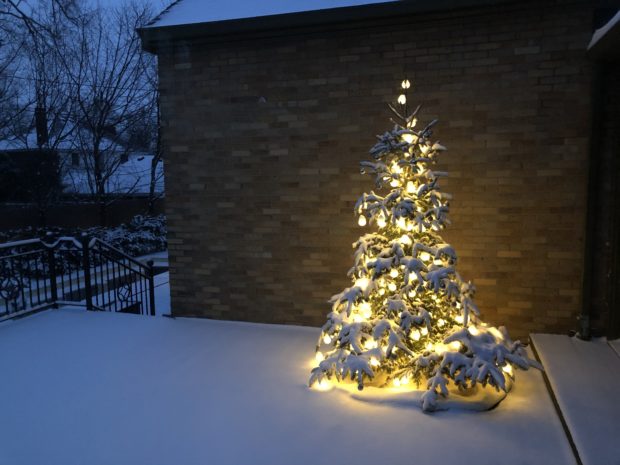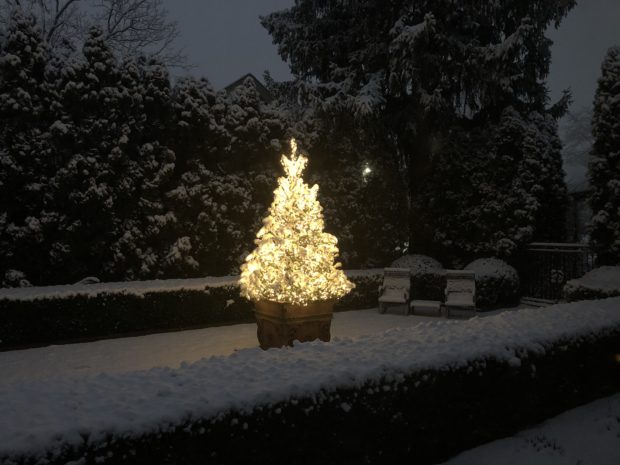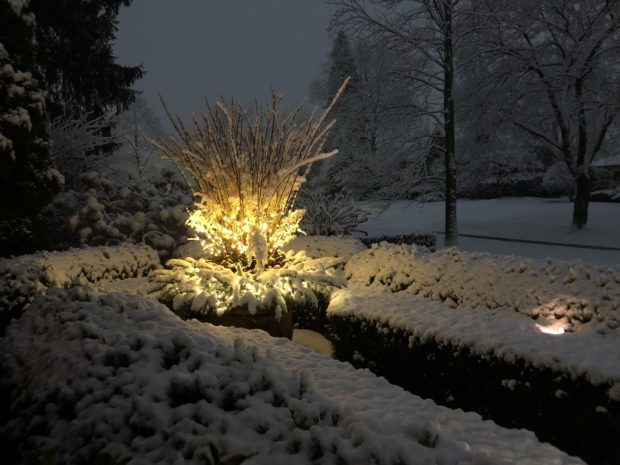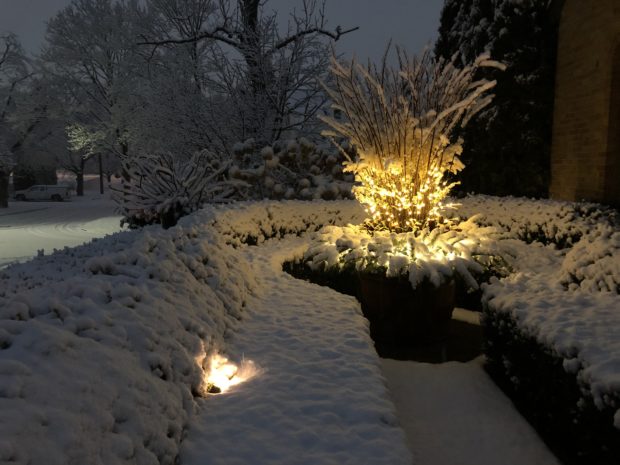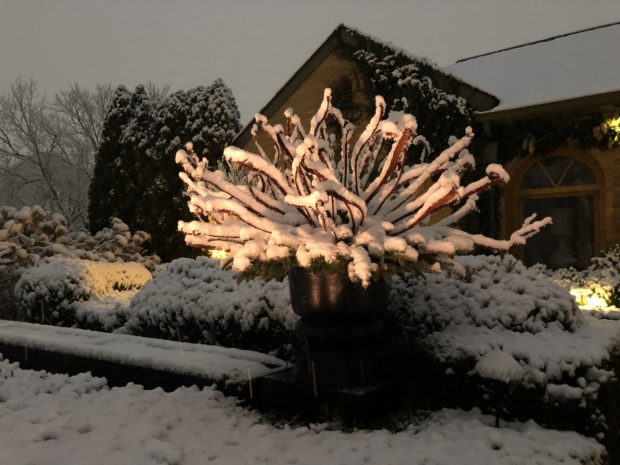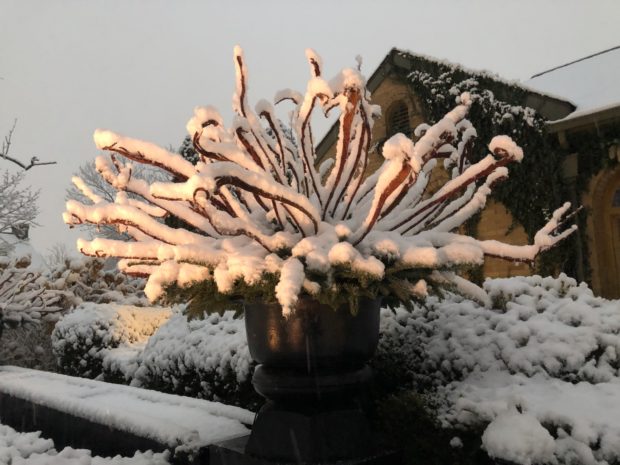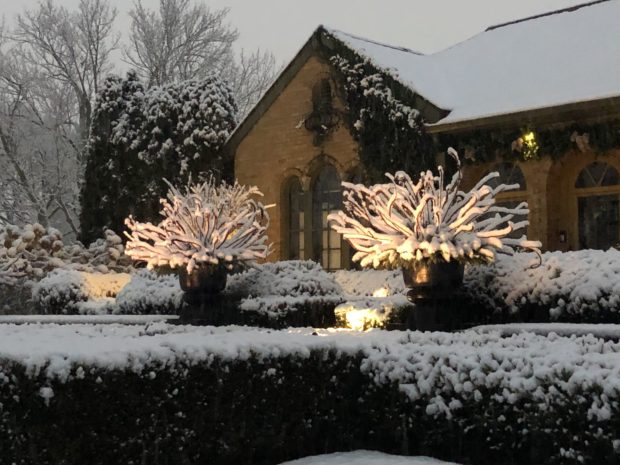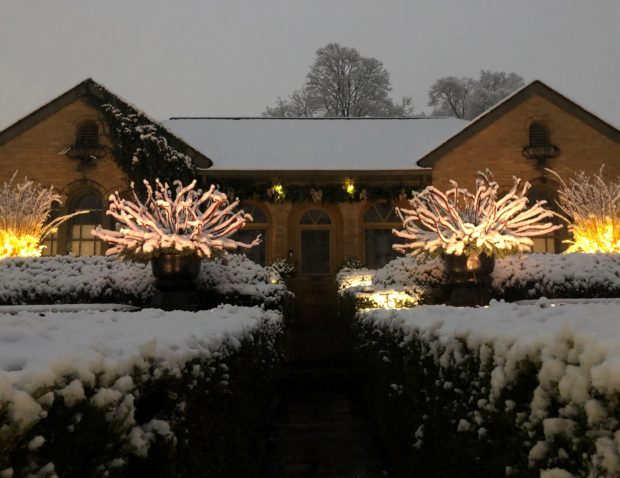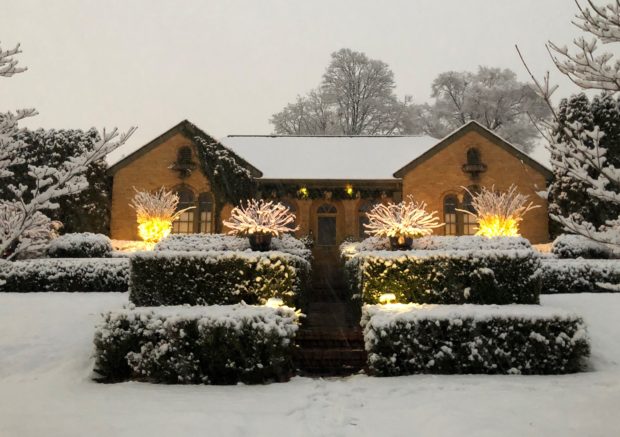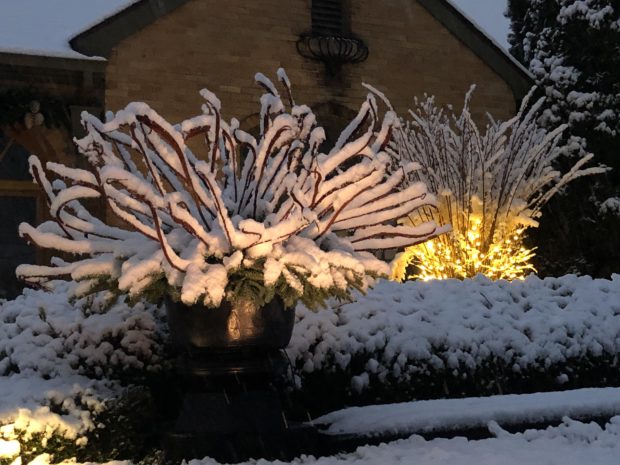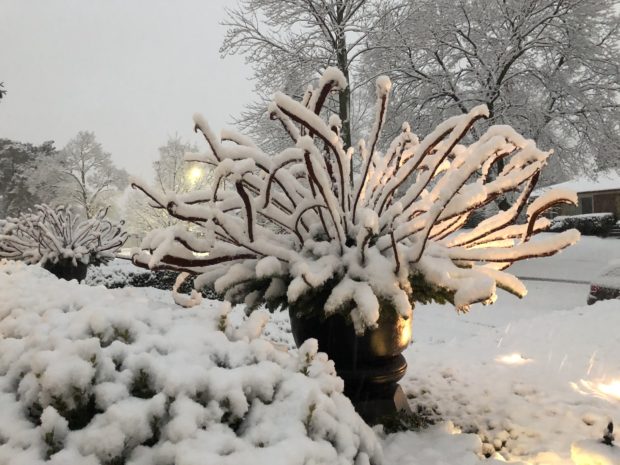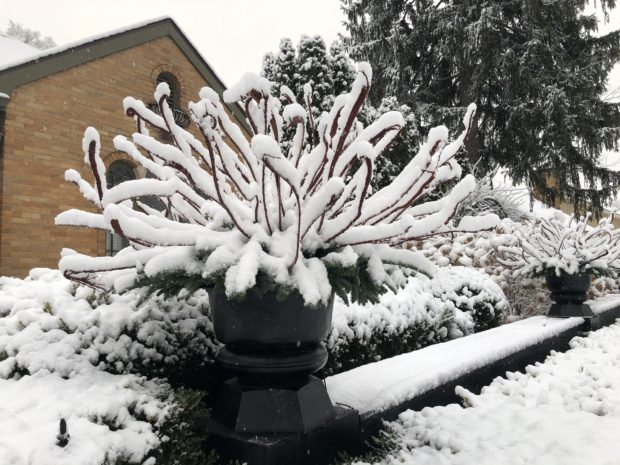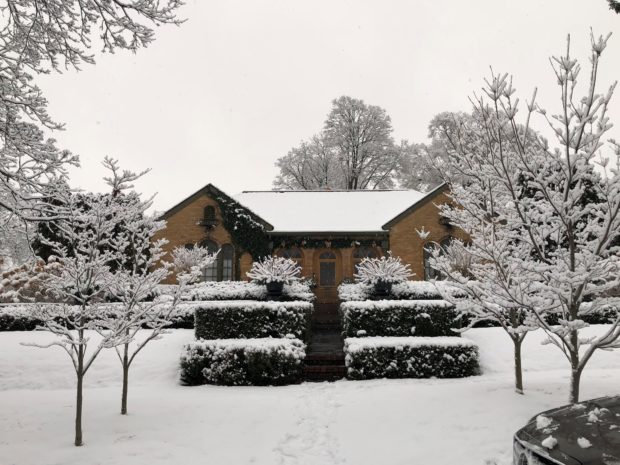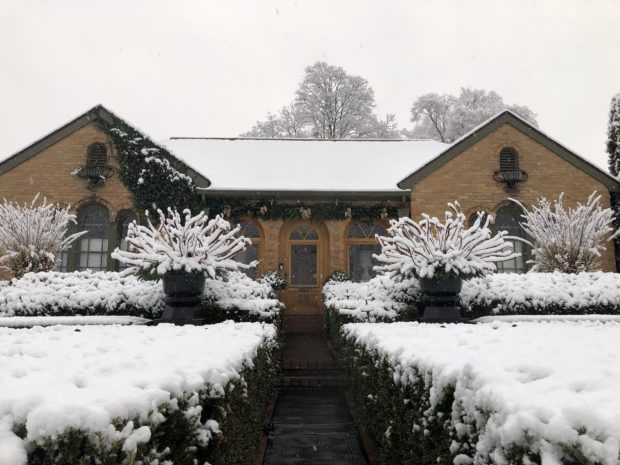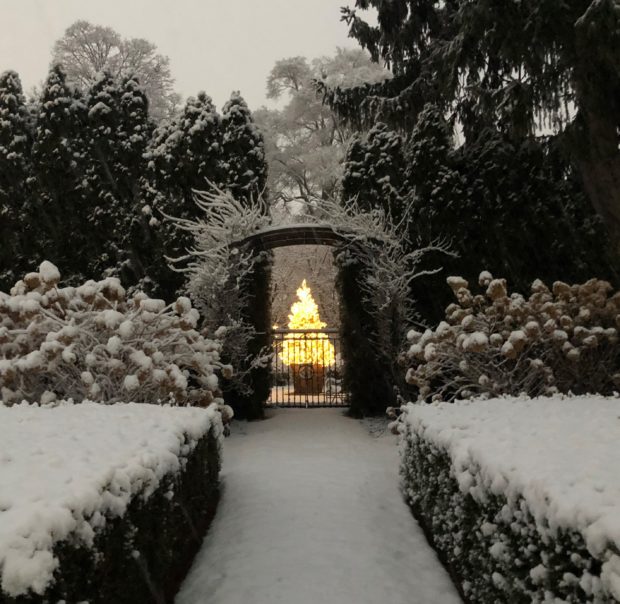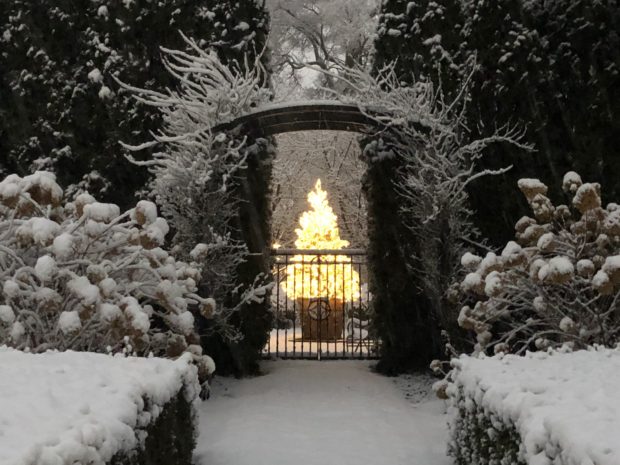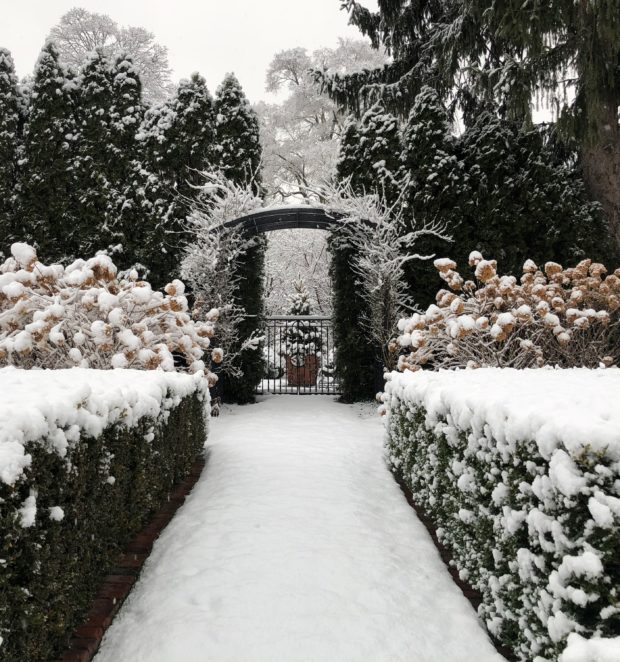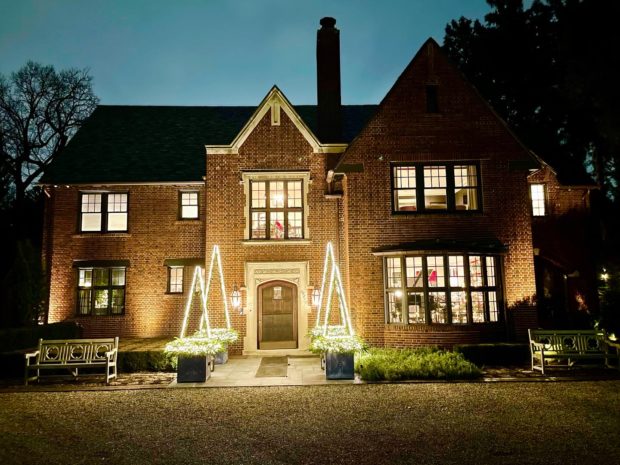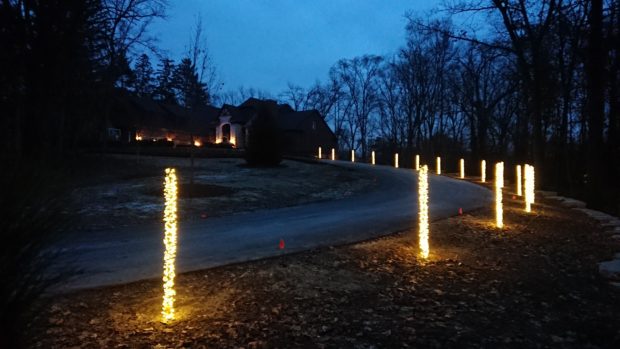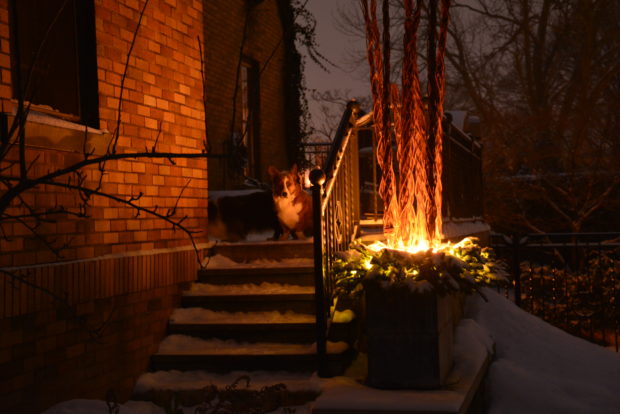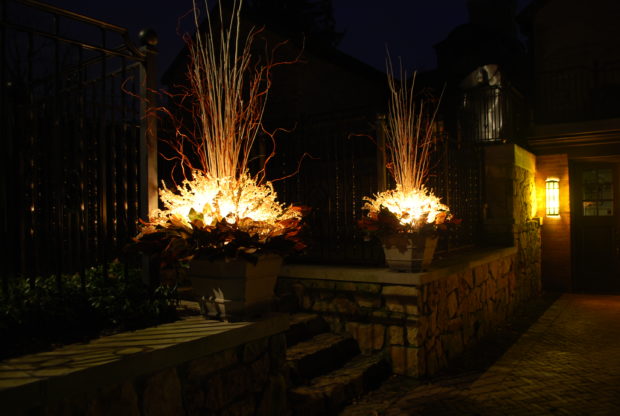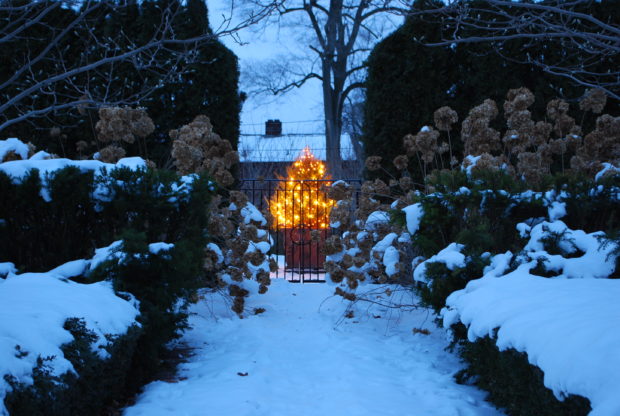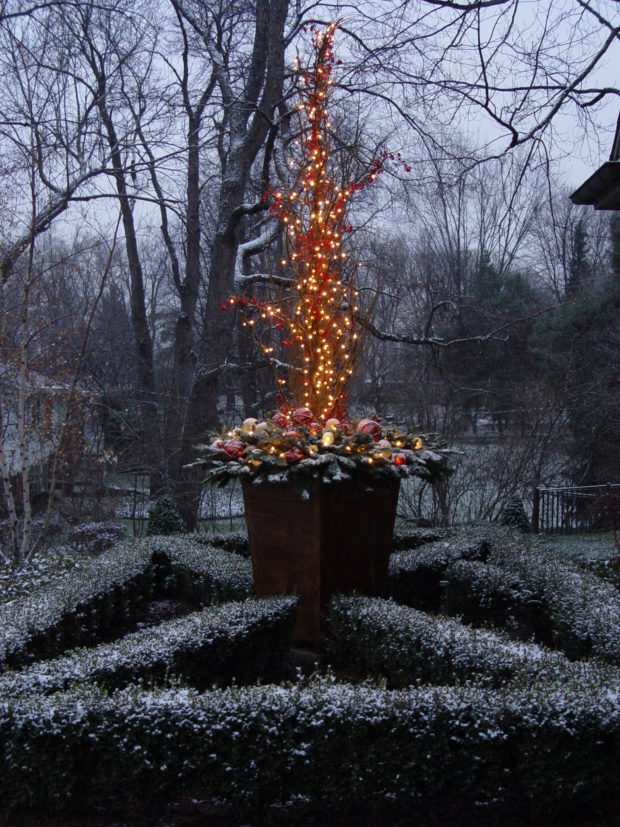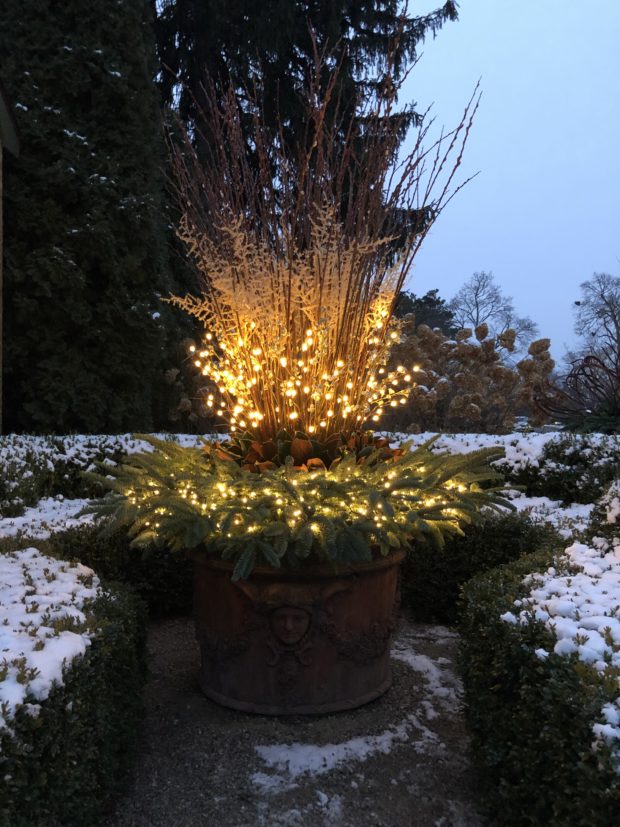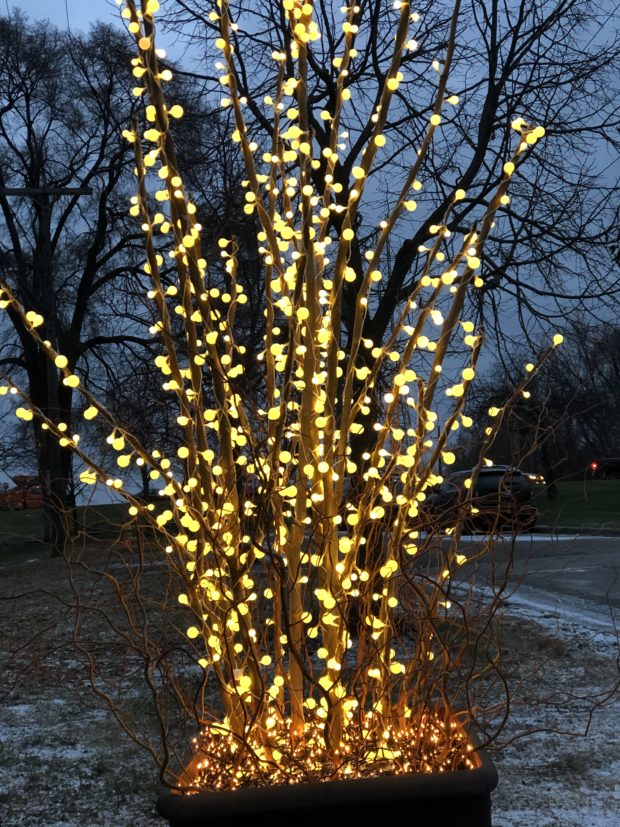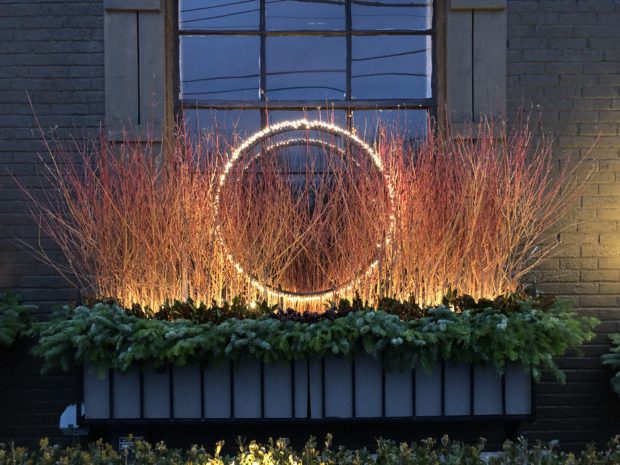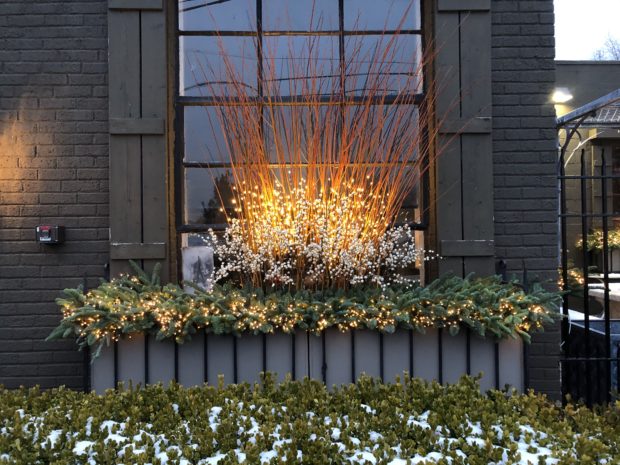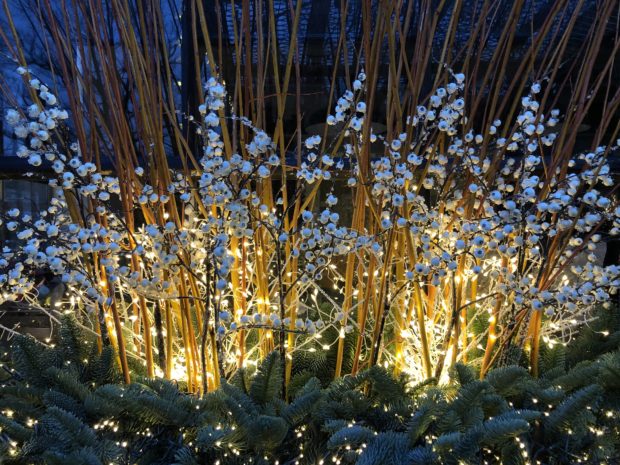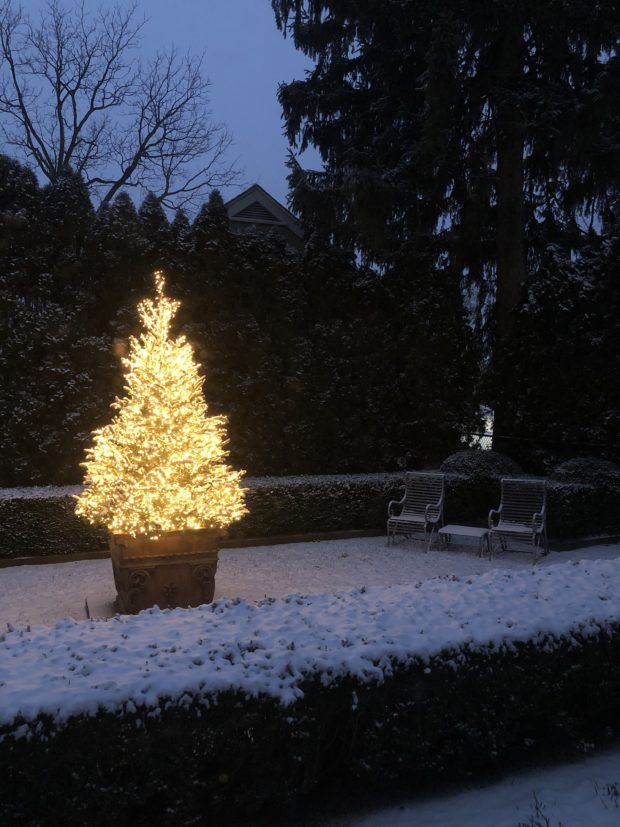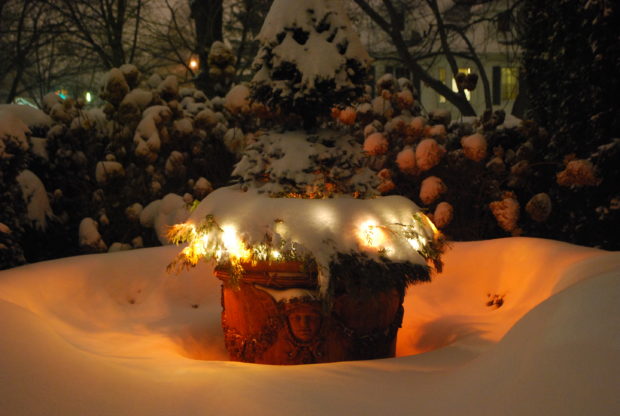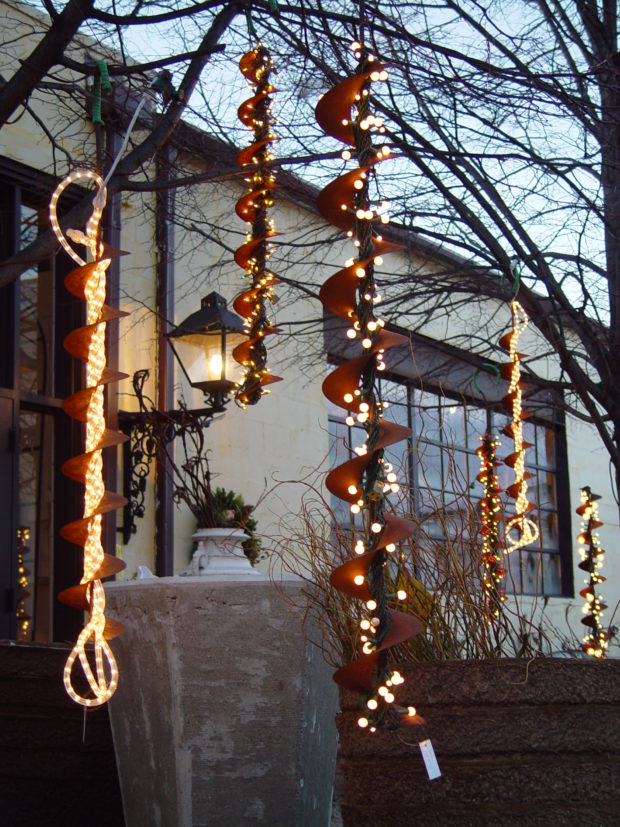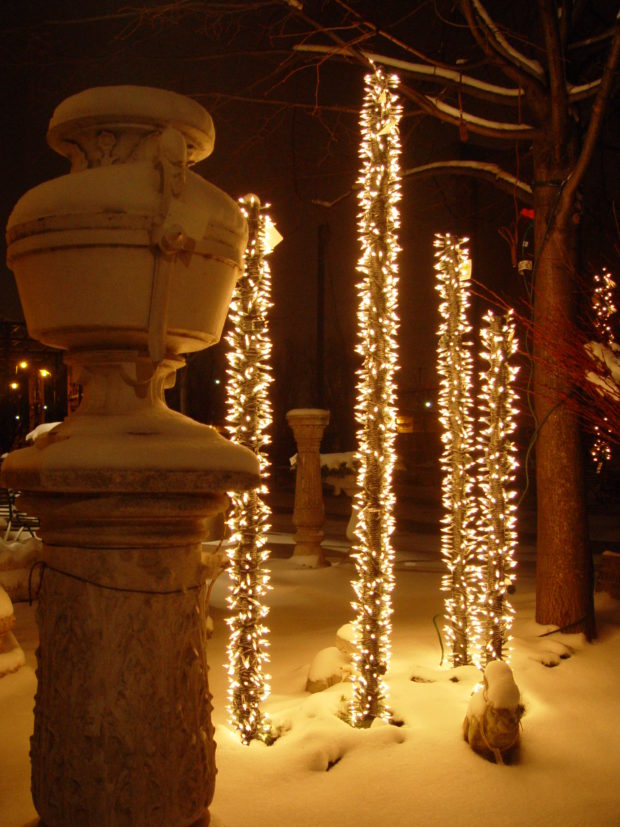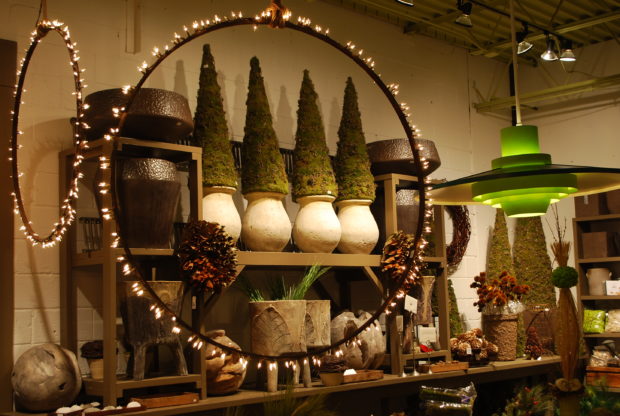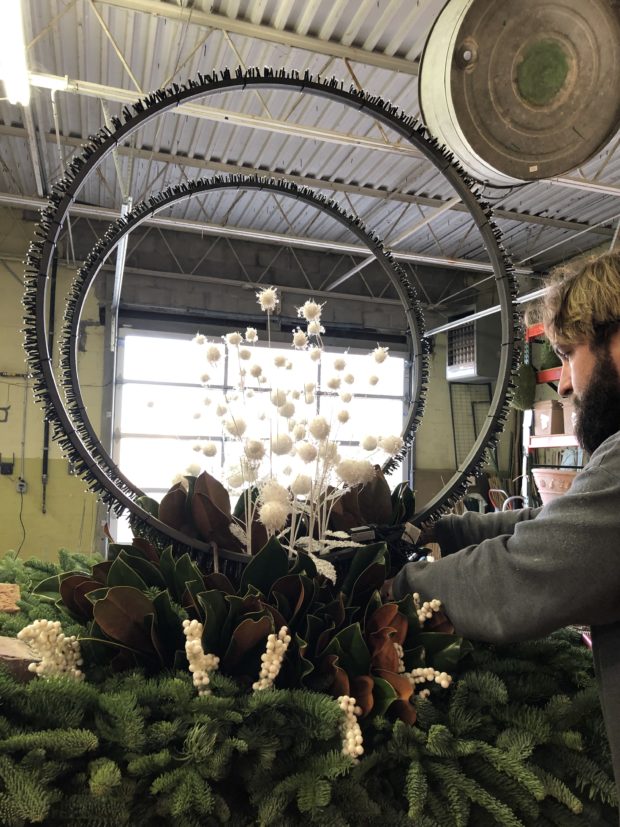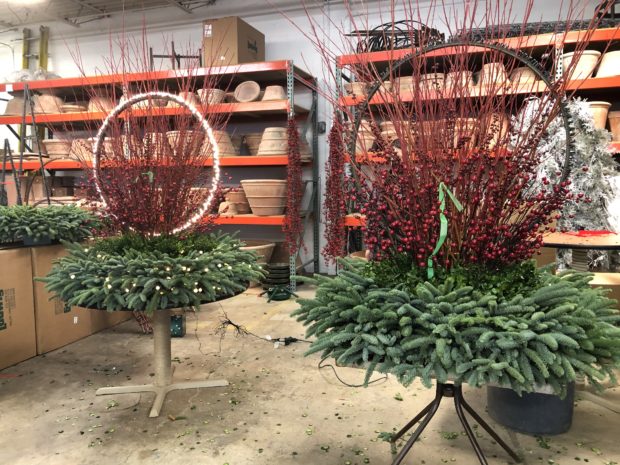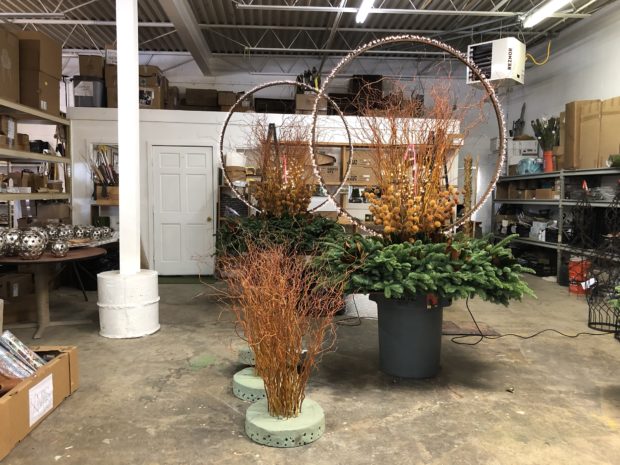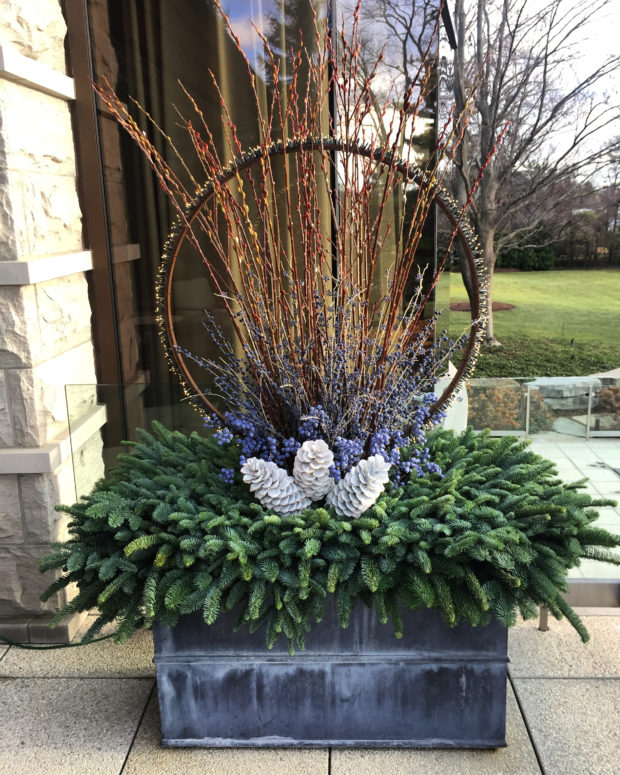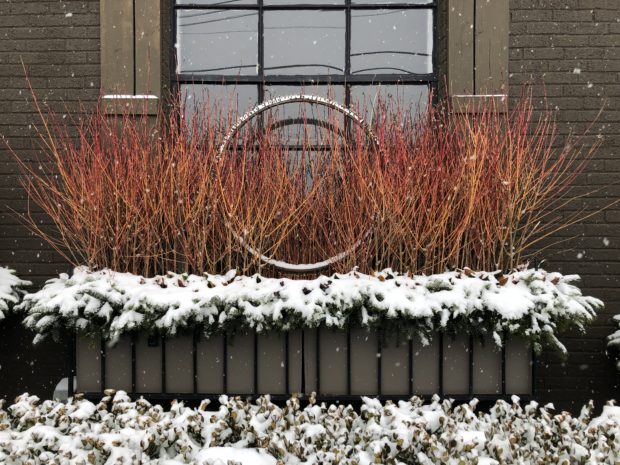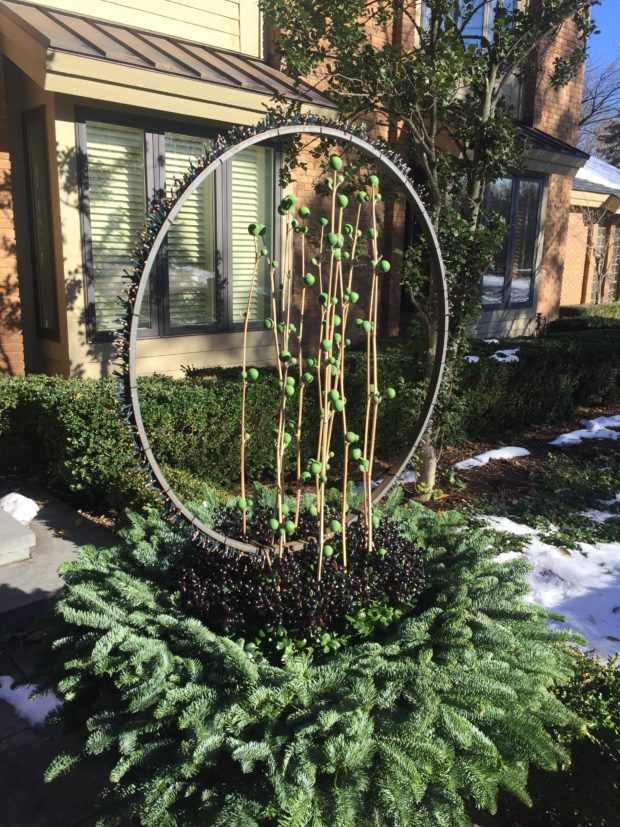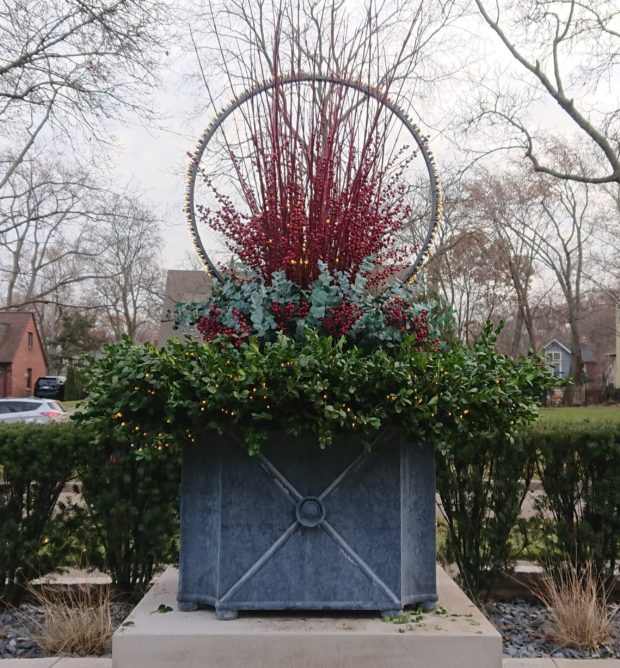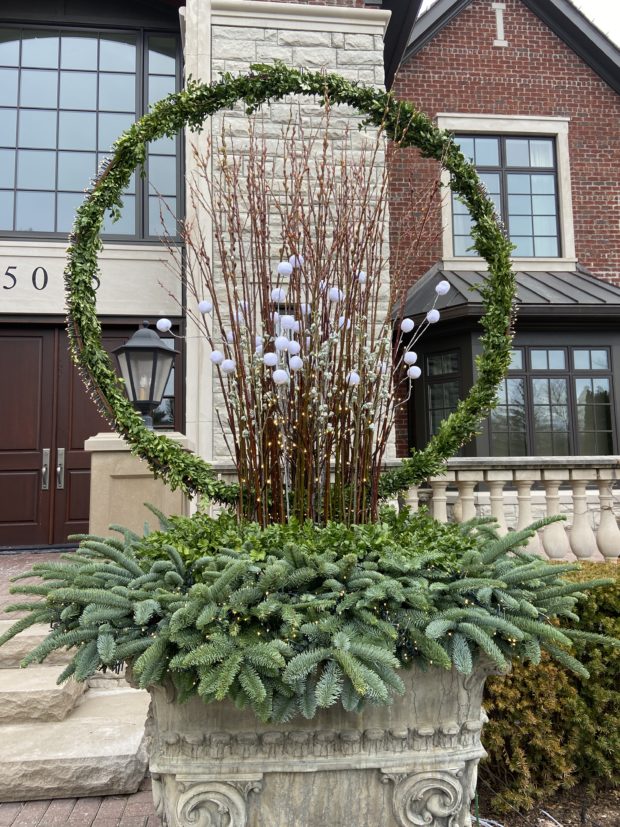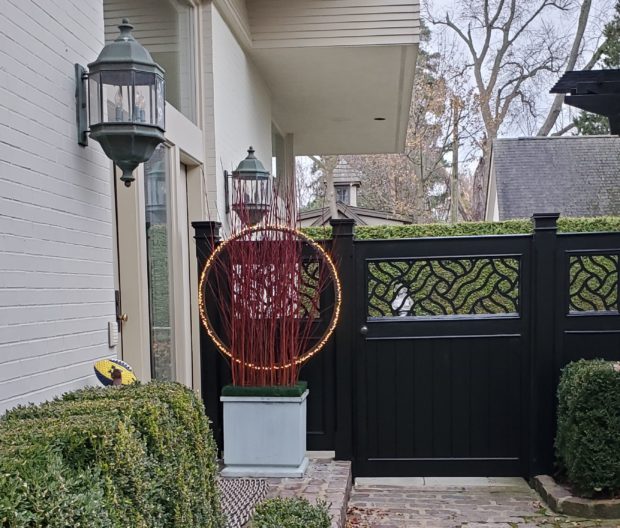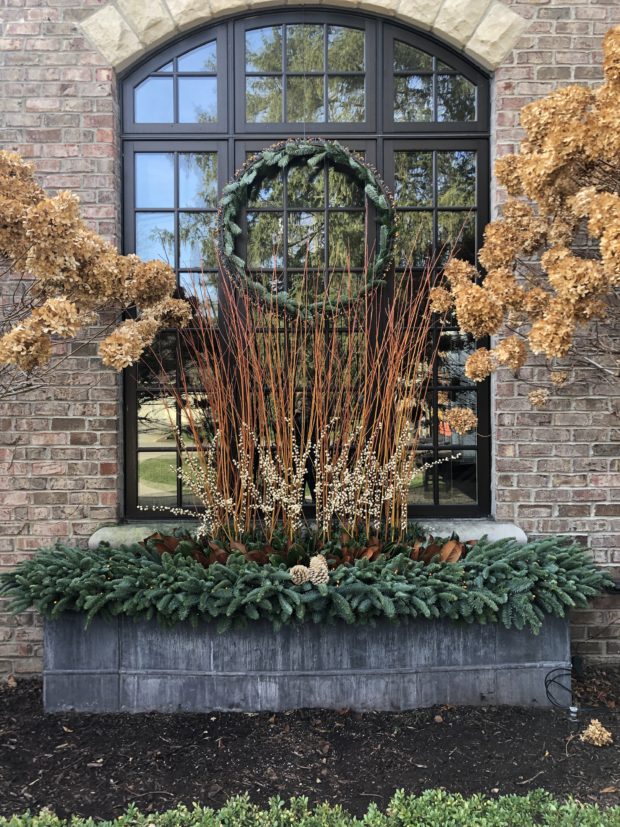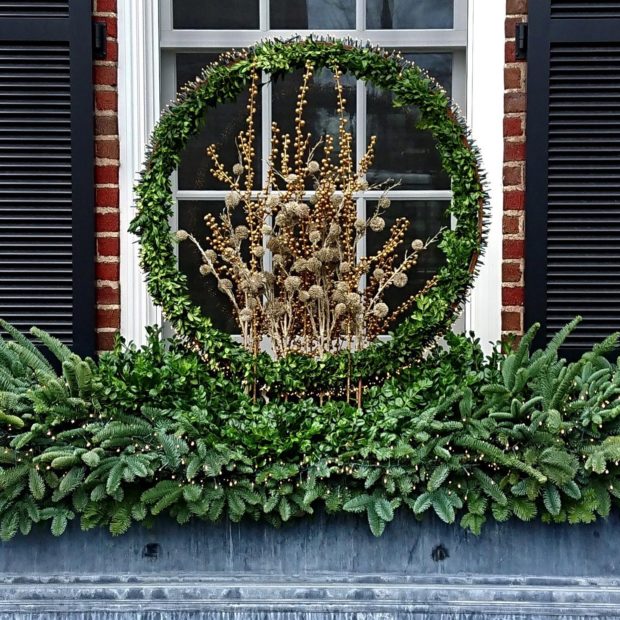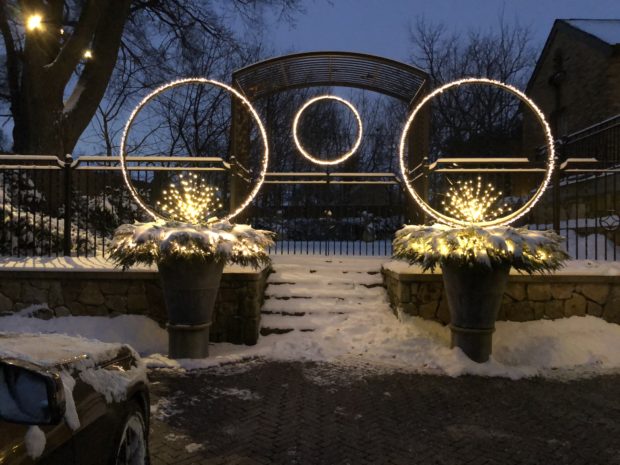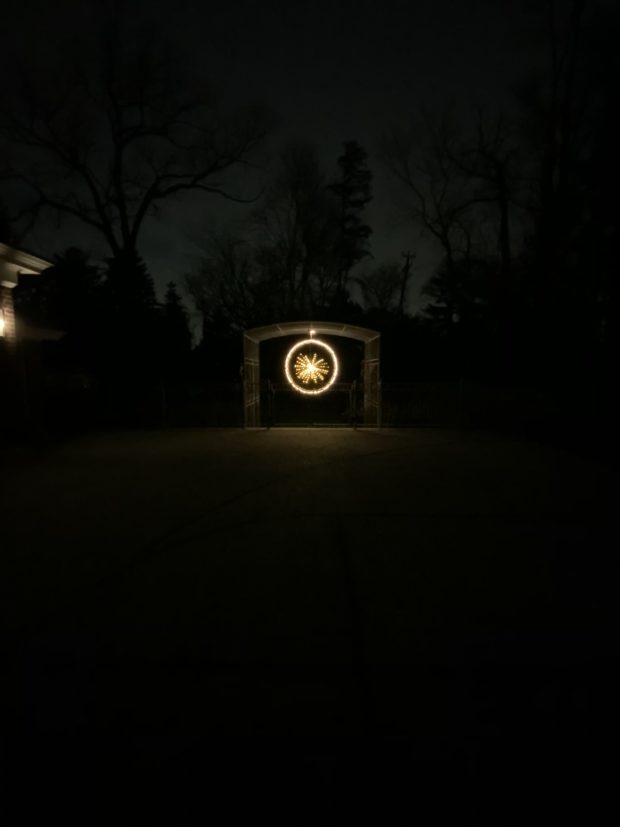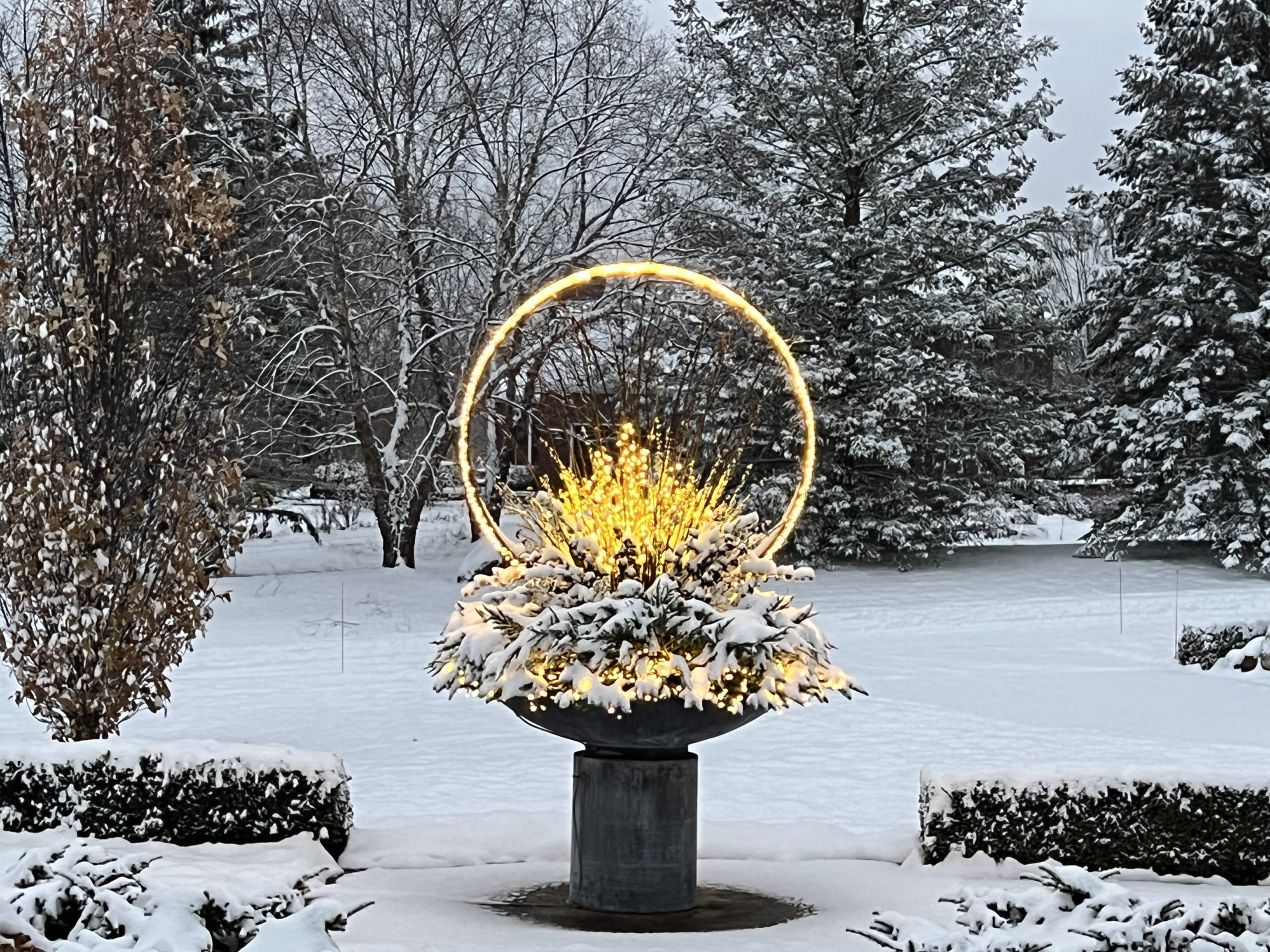
The centerpiece for a winter container will be all the better with the addition of light. After all, we have 12 hours of darkness this time of year. Nothing warms the winter landscape like lights glowing. Years ago it was a source of endless frustration, trying to arrange and suspend incandescent light strings in the air-so as to illuminate a twig based centerpiece. LED lighting devices are readily available now, making the job of getting winter containers to glow an easier one. Many of them so faithfully mimic a natural twig that they are invisible during the day. But no device is as beautiful, sculptural, effective, and simple as Rob’s light rings. A steel circle welded from steel channel is wound round with LED light strands that are attached every few inches with small zip ties. The rings have a base with 4 prongs that can be inserted into the soil of a container, or in the ground. The winter container pictured above was done by a good client of ours, whom we loosely coached on the finer points of our method of winter container construction. It did not take much time for him to grasp it all and run with it. This 54″ diameter bowl is home to a 5′ diameter light ring. The effect, even during the day, is spectacular. A light ring of this size needs additional ballast in the form of steel rebar, which is pounded down in to the soil, and attached to the light ring armature with concrete wire.
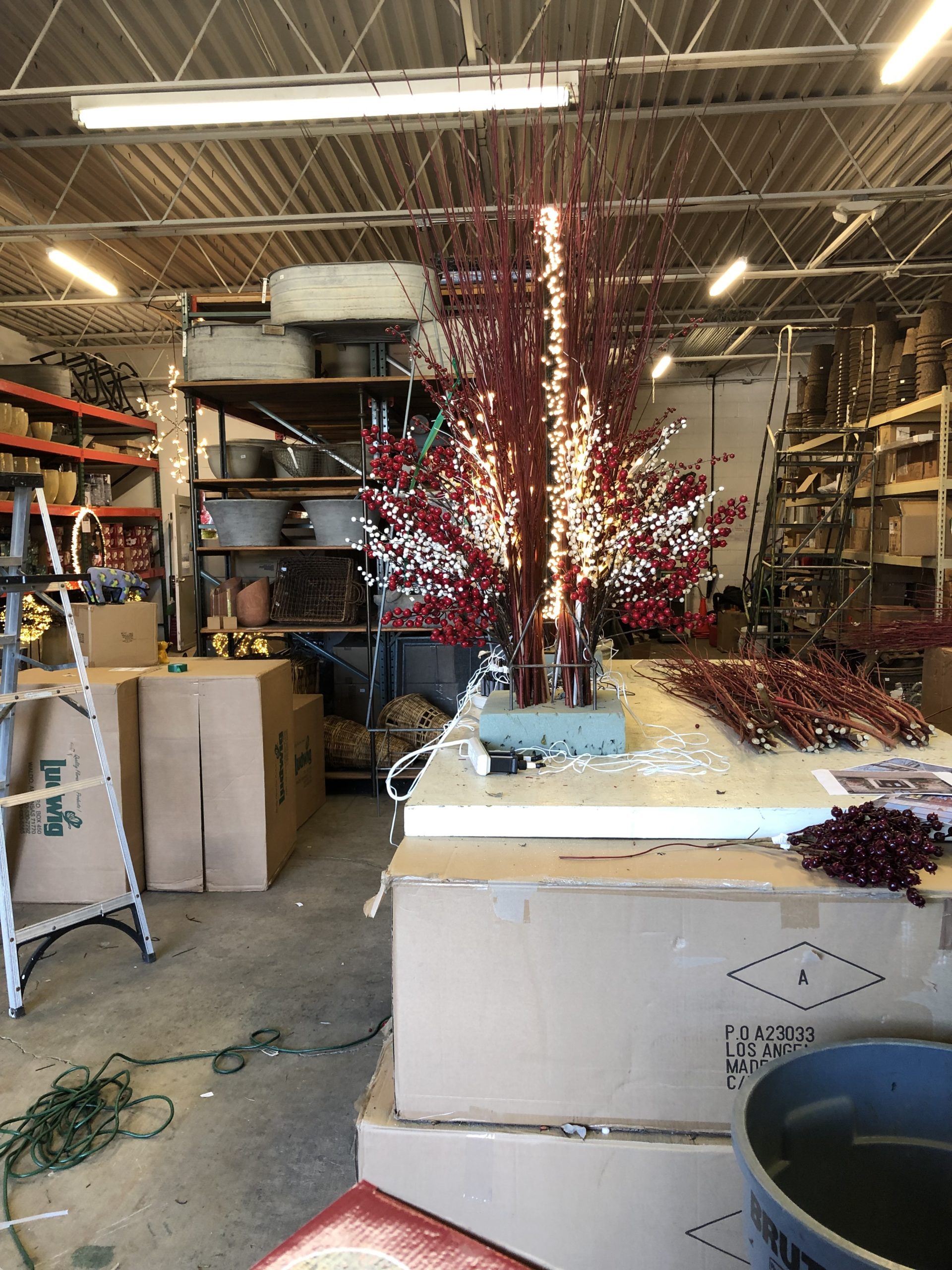 This picture reveals the look of the light ring from the side. We frequently make a separate foam form for the light ring, which will sit on top of the form that holds the greens. This makes for an easy installation of the light ring. Barely visible at the bottom is the triangular steel armature for the ring. This form is incredibly strong and stable.
This picture reveals the look of the light ring from the side. We frequently make a separate foam form for the light ring, which will sit on top of the form that holds the greens. This makes for an easy installation of the light ring. Barely visible at the bottom is the triangular steel armature for the ring. This form is incredibly strong and stable.
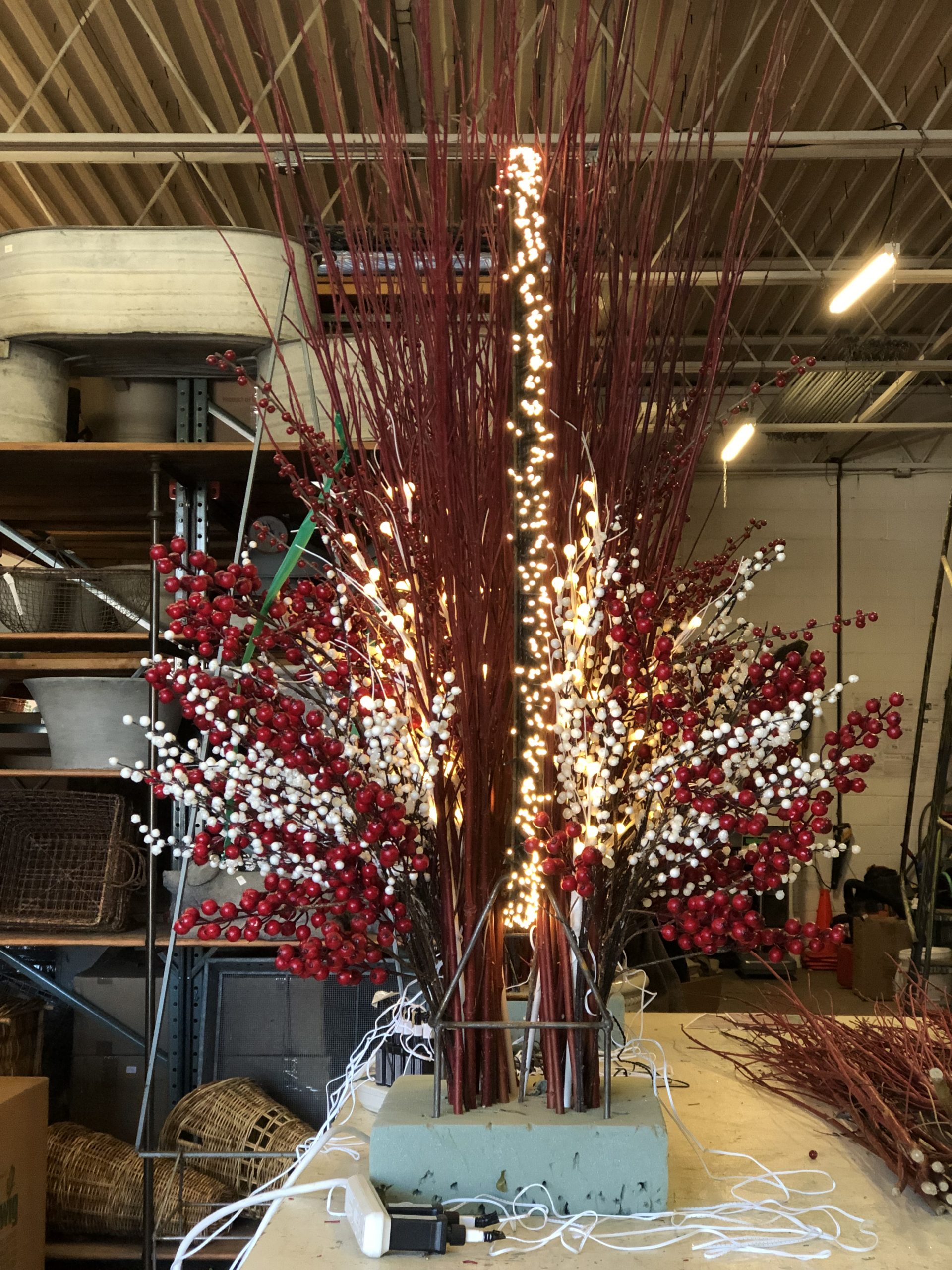
This particular construction features ball shaped lights attached to white faux branches. As the container has white faux berry stems, the lighted sticks are readily disguised. Making the lights in a container as invisible as possible during the day is a mark of thoughtful construction. Once this container is installed, no one will see the cords, transformers and electrical strips. What will shine the brightest is that all over glow.
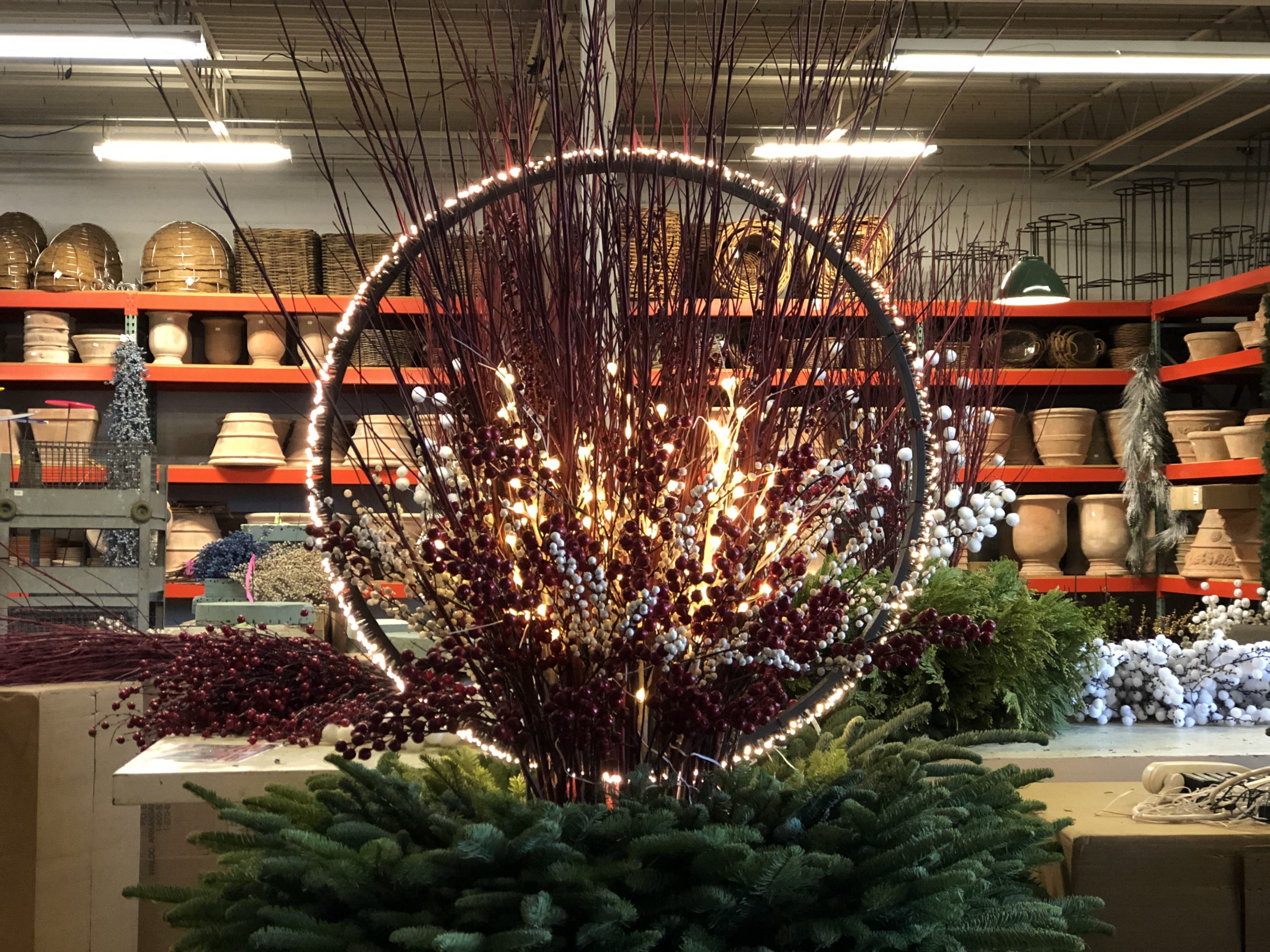
The light ring is first and foremost a circle. That geometric form has no end of symbolic meanings, many of which have significance to gardeners. The lighted ring is a symbol of hope to me-the hope for the light at the end of the long tunnel coming up called winter. And the banishment of the winter dark. If none of those descriptions prove to be appealing to you, there is also the simple beauty of the form, and how it can organize and add visual and emotional heft to a winter pot. I am personally fond of an arrangement that keeps the complete circle visually intact. We either cut the greens below the lights on the ring, or install short pieces.
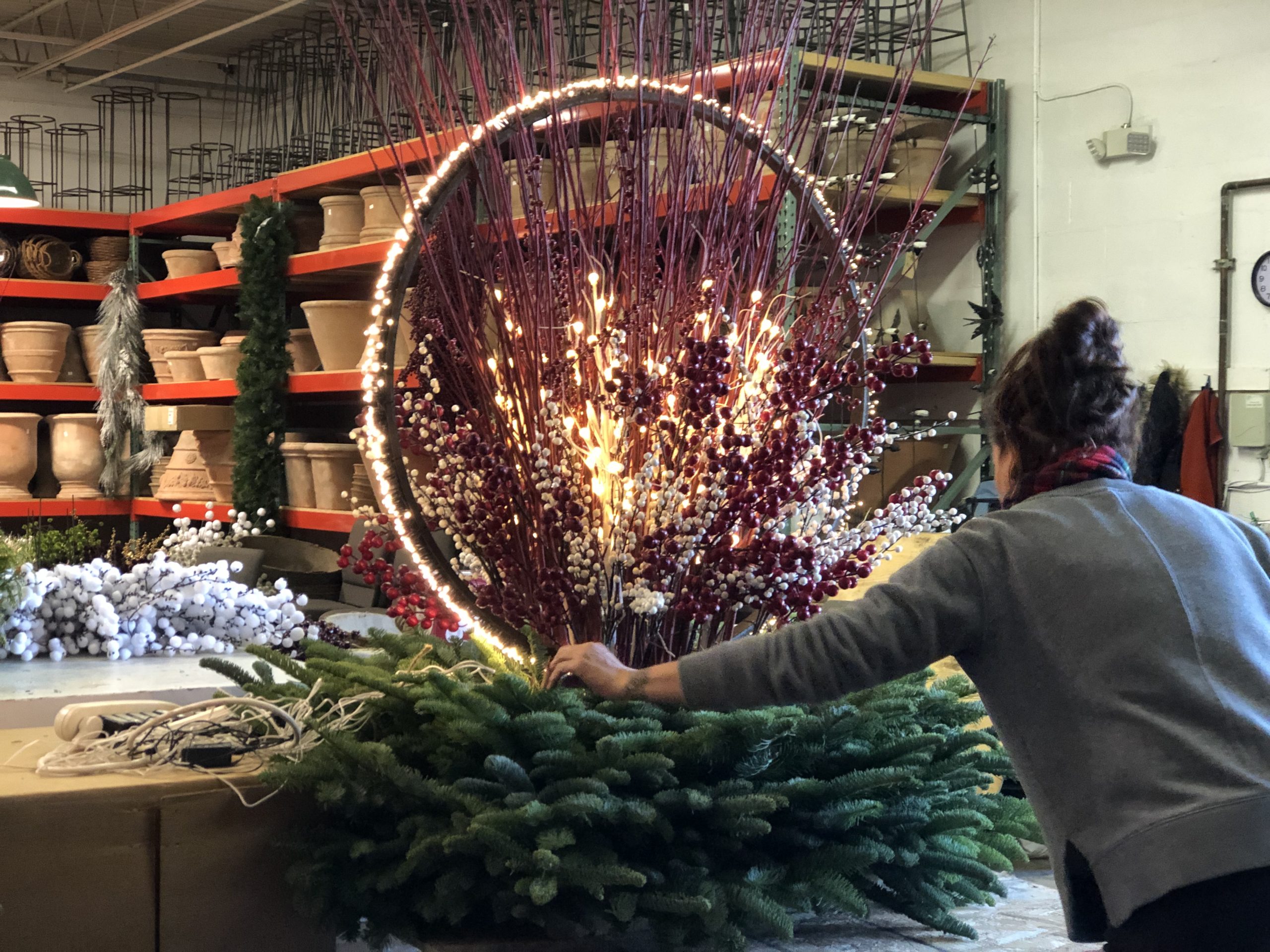
When Birdie adds greens to an arrangement, she is always watching the effect of her placement, and not her hands. This is a difficult concept to put in words. The hand will find the spot to insert a stem when the eye finds the spot where the stem should be. It takes imagination and confidence to work like this. The dry floral foam is very forgiving of a placement that needs to be changed or tuned up.
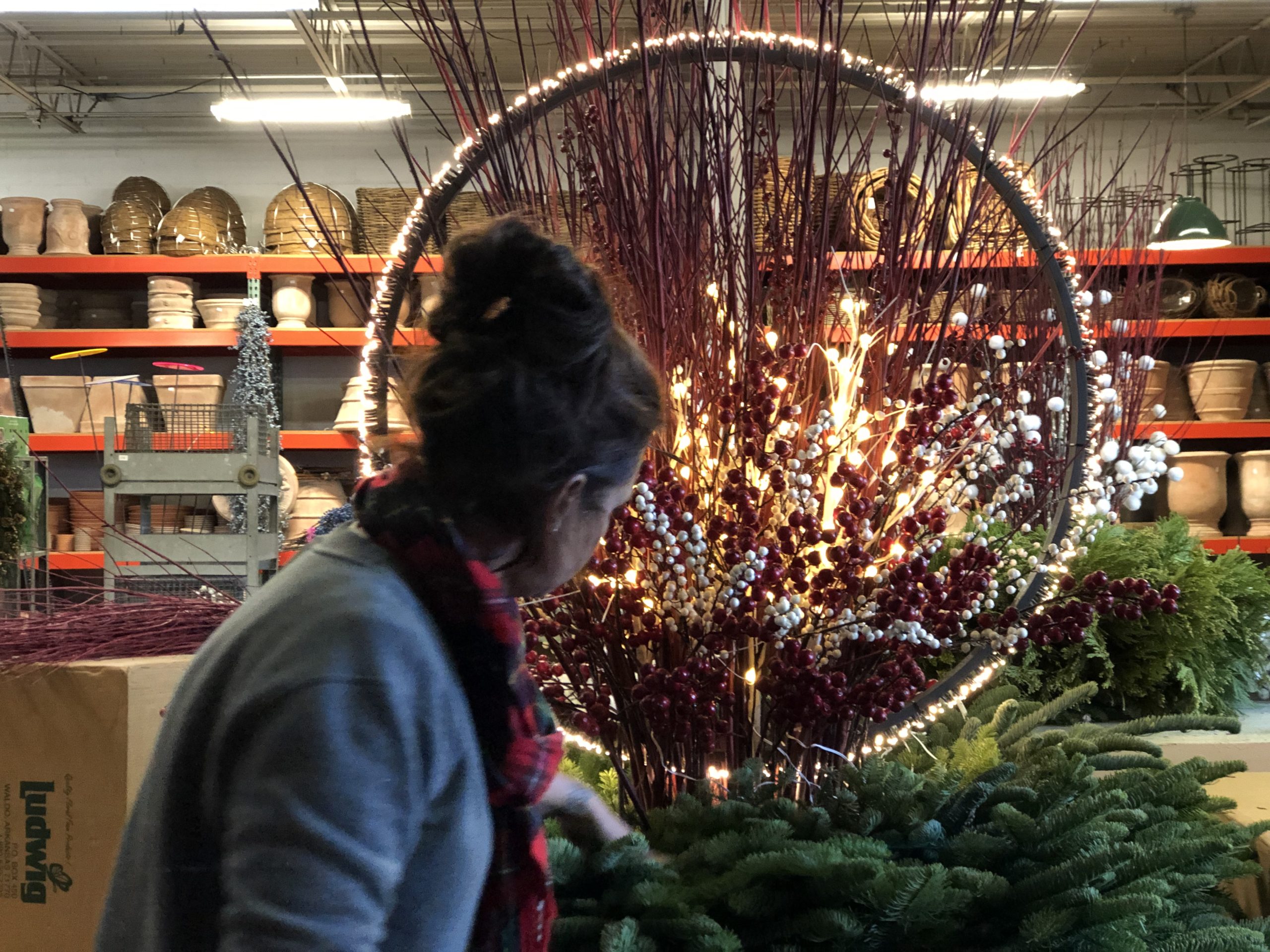 Though the twigs, picks light sticks look wonderfully chaotic, the process of assembling them so all the elements are evenly and brightly lit asks for a focused hand.
Though the twigs, picks light sticks look wonderfully chaotic, the process of assembling them so all the elements are evenly and brightly lit asks for a focused hand.
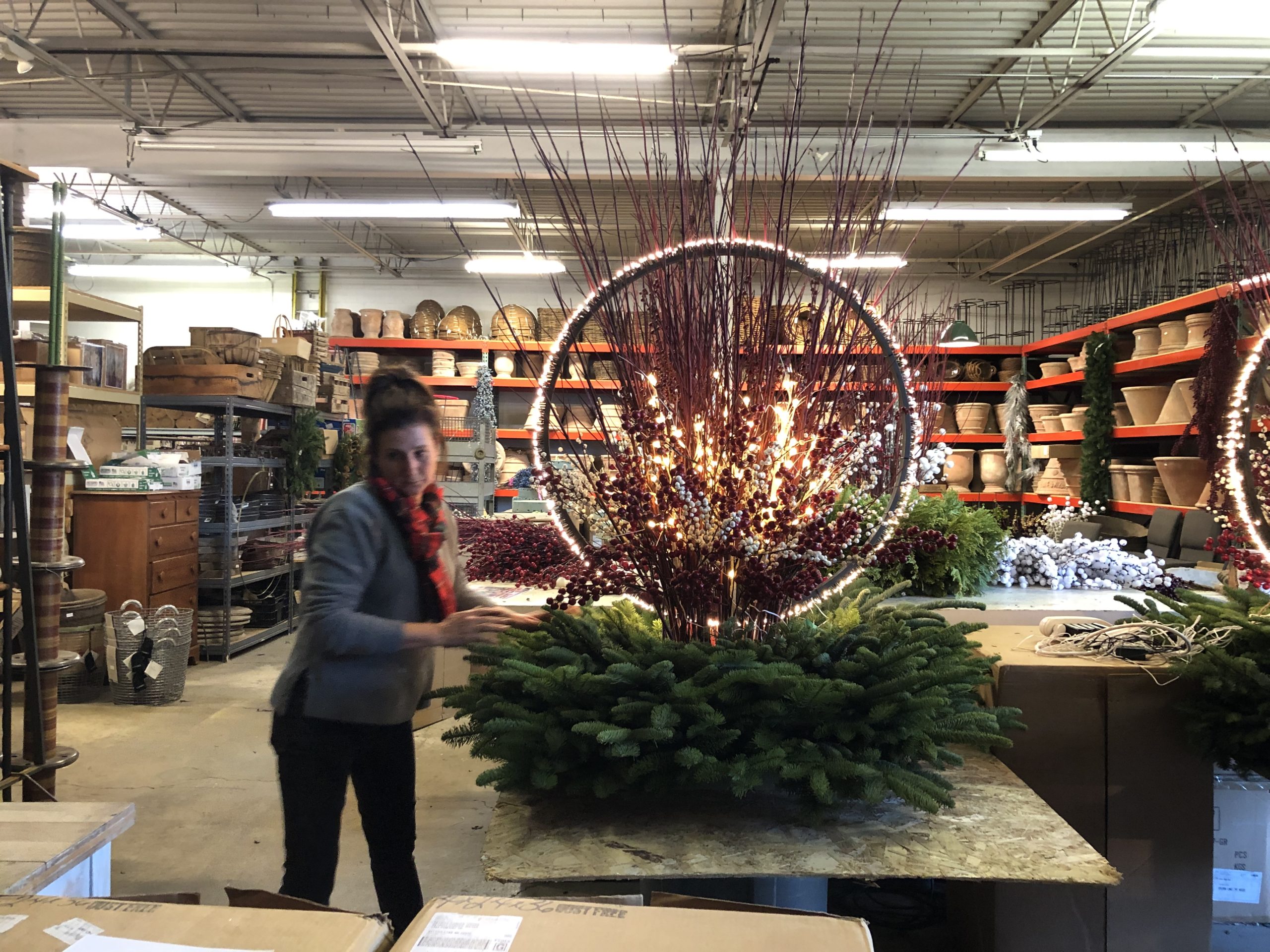
I can tell by the relaxed look on Birdie’s face that she is about to sign off on this pair of arrangements.
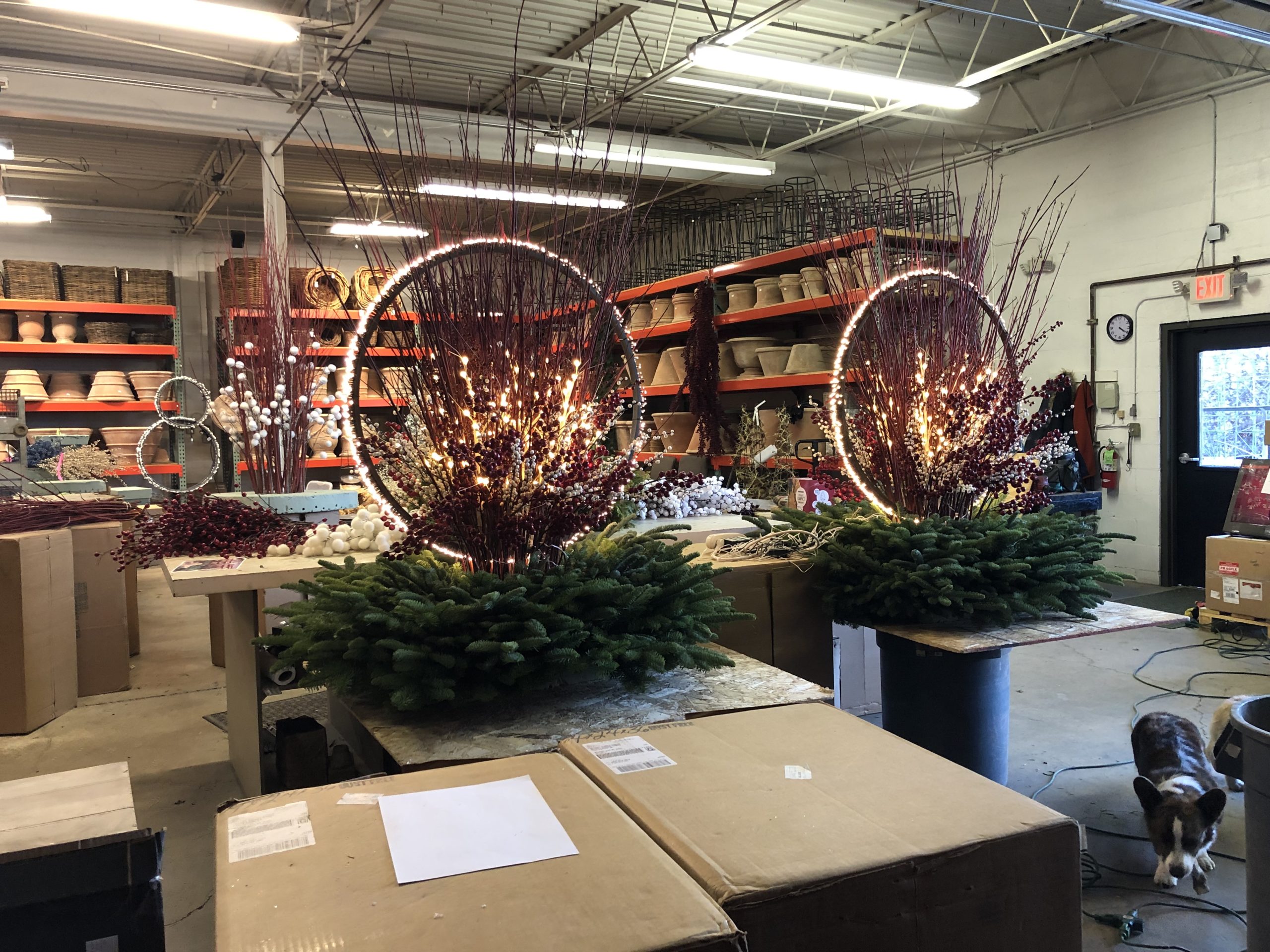
They look fiery in the shop. They will light the front door and portico of our client’s house in a dramatic and welcoming fashion.
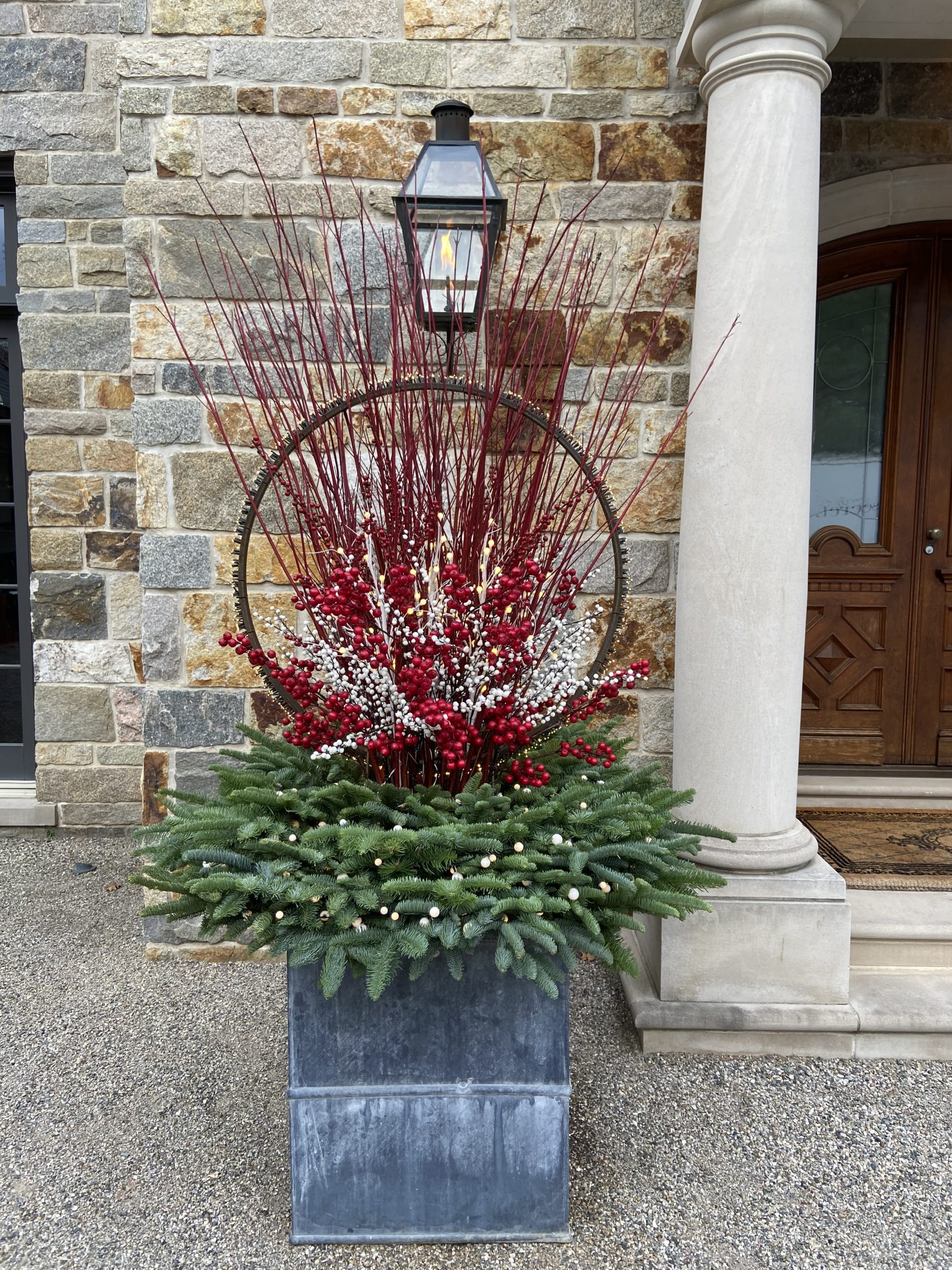
The finished winter box has a sculptural presence, even during the day. It is evident in this picture that all of the lights in the ring will be clearly visible at night. Tougher to spot are the lighted white stems integrated into the dogwood branches. They will help to illuminate those branches at night.
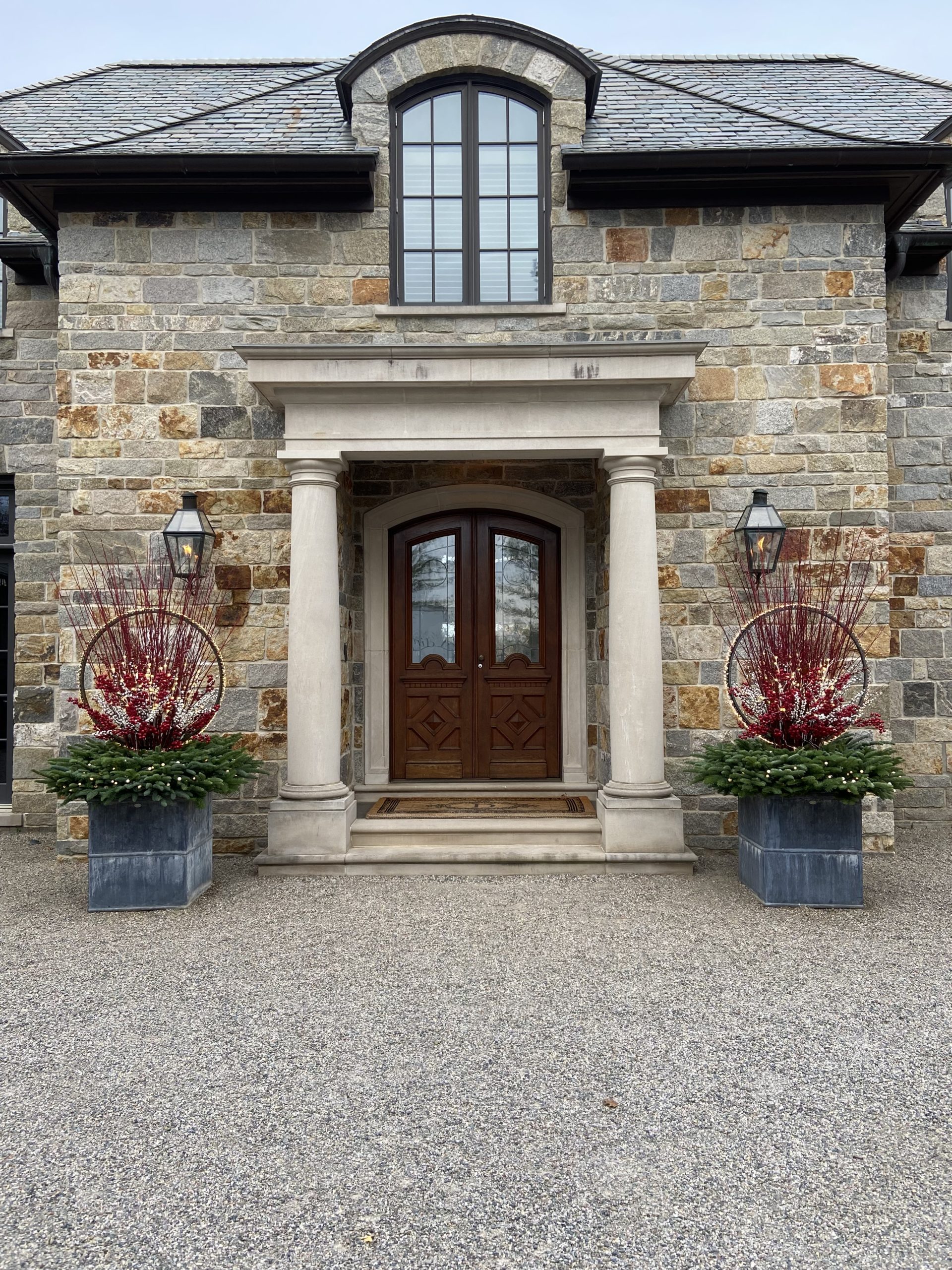
pair of lighted pots
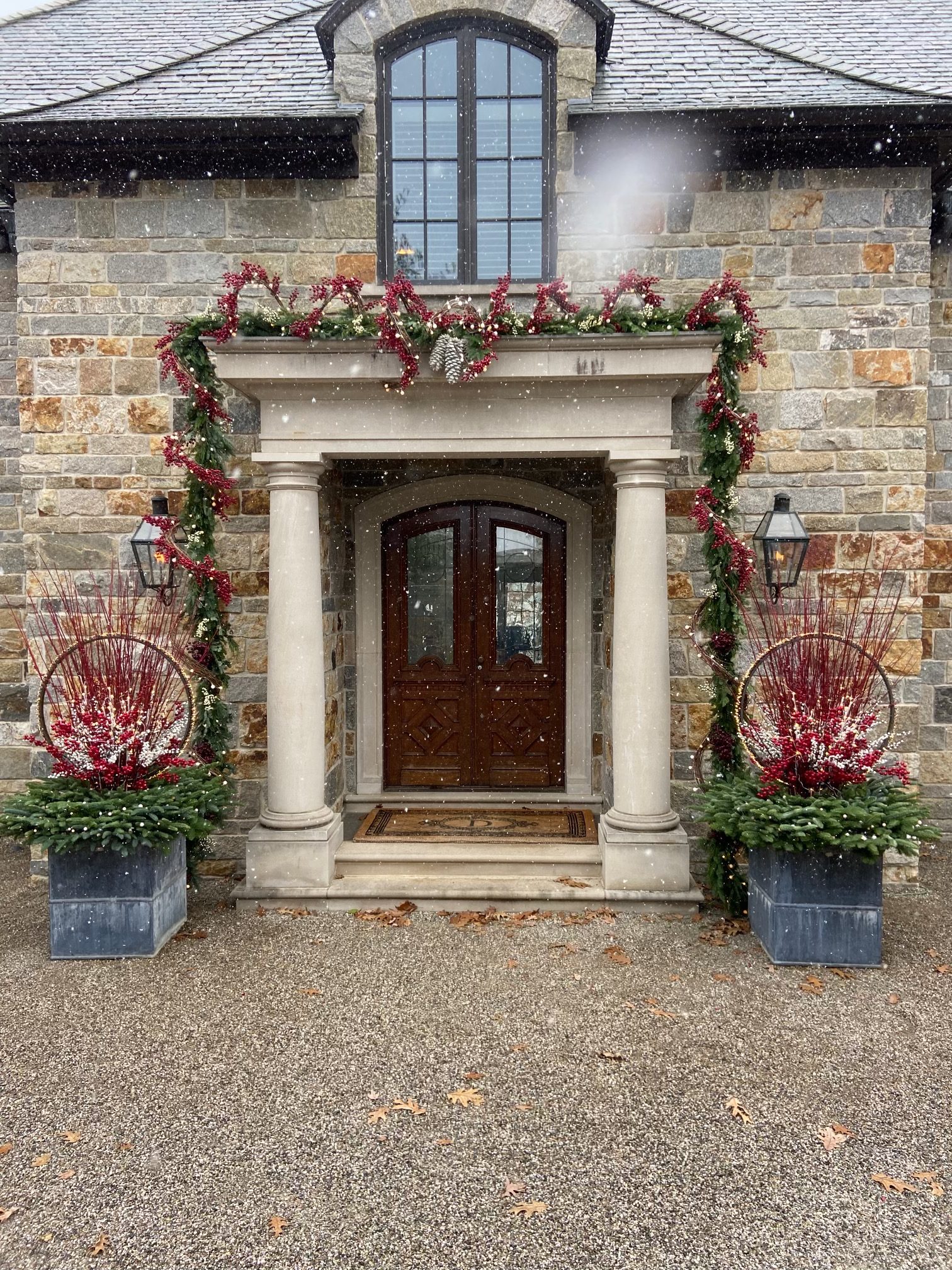
Snow flurries and a garland finishes the winter warm up.
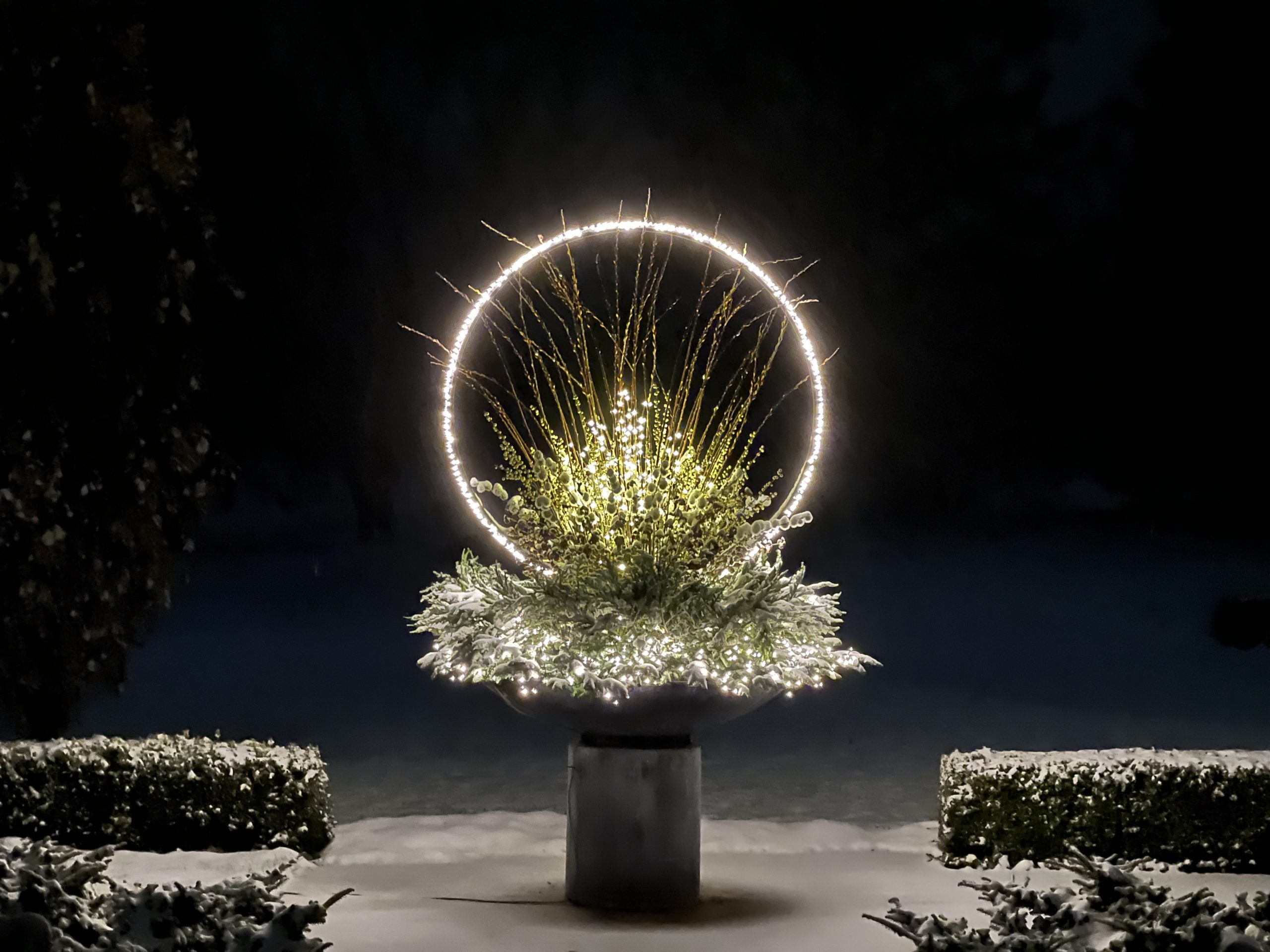
See what I mean?
